Okay… I’ve posted on before on starting fruit trees from seed… and I’ve written a bit about starting nuts here, but it’s really too juicy a topic to cover in just two little posts. The following is my do-it-yourself guide to starting a variety of trees from seed – with plenty of pictures I took of my own projects. Yes – they’re not huge trees yet – but they will be. I’ve only been at this for three years and I’m already amazed by some of the successes.
I’m madly in love with seeds. They’re cheap, readily available and could potentially grow into something amazing. The promise contained in a tiny seed is incredible.
However, when it comes to growing trees from seed – fruit and nut trees in particular – we’re almost always told “don’t do it!!!”
Why?
“It won’t breed true!!! You’ll get tiny/bitter/nasty/worthless fruit!”
Really? When you save cabbage seed and plant them the next year, do you get tiny/bitter/nasty/worthless plants? No!
The reality is, you won’t get exactly what you started with, but most of the time, you’ll get something worthwhile. There are always genetic traits we don’t like that may pop up, but most of the time, you get something decent – or even excellent – when you plant seeds, fruit trees included.
Unlike grafted trees, trees that grow on their own roots are often tougher and larger, if not always as productive. Grafting is very useful for commercial farms because it allows them to grow exactly the variety they want. The navel orange, for instance, is a cloned variety that’s been around for almost 200 years. The same genes… replicated ad infinitum via cuttings and grafting. It’s amazing – but in my mind, not the safest thing to rely on when you’re dealing with diseases, pests and changing climates. Where do we get new varieties with disease resistance, larger fruit, higher cold-hardiness, etc.? We get them from planting seeds and seeing what hidden gems might pop out of the plant’s genome.
Of course – this doesn’t happen overnight. Unlike corn, you can’t breed trees quickly. It takes a long time to go from seed to producing tree. Sometimes prohibitively long. But that doesn’t mean we give up. That just means we start planting right now.
I fully intend to get a variety of something named after me before I die. I’m really not picky – it just has to be something tall, productive and handsome so it compares well with its namesake.
If you’re ready to get started with starting trees from seed, the loquat is a great first candidate. It’s in fruit at this time of year, so it’s likely you can nab some seeds easily. Now let’s look at some various trees and how to start them.
LOQUATS
Here are some one-year-old loquats I started from seed last spring:
They’re about 2′ tall now and growing fast. Pretty much ready to be planted out. Loquats start quite easily from seed and don’t need stratification or scarification to germinate. Just pop a handful of fresh pits in the ground and start watering. Most will sprout. When they do, carefully pull out and pot up the ones you want to keep – then plant the rest on a local foreclosure property.
CITRUS
Citrus are also really easy to grow. Here is a key lime tree my daughter started from seed a little less than three years ago:
It’s over 4′ tall and thriving. Interestingly, unlike some citrus, key limes breed true to type. Plant a key lime seed, you’ll get a key lime tree. Most citrus will give you something edible and similar to their parent (see tomorrow’s post), but not all. From what I’ve heard, cross-breeding is often a possibility, as is the occasional reversion to a sour variety. Plant citrus seeds when they’re fresh as they don’t last long. If they dry out, they’re dead.
AVOCADOS
Avocados are another easy-to-grow tree. Almost every year when I was a kid, my grandmother would start pits impaled with toothpicks and suspended in water. They would grow 1-2′ tall in her window, then she’d transplant them out to her backyard where they would invariably die of neglect. This was sort of a hobby of hers, I suppose. (I miss her tons… I wish she was alive so she could read this post and scold me…). The tree below was started from a Hass pit.
POMEGRANATES
DATE PALMS
with our humidity and the various palm diseases spreading across the state – but when you start with seeds, the experiment is basically free. The little palms below were started from a container of dates I bought for a picnic.
PEACHES
1. They require rather specific chill hours.
2. Nematodes can be deadly for peaches.
CONCLUSION
It’s not an instant gratification thing, but over time you can get a wonderful variety of trees going and find excitement in knowing that no one else has the varieties you’re growing. If you plant plenty of seeds, you’re bound to get some good trees. If one of your home-grown trees produces poorly or bears sour fruit – so what? Graft onto it. Cut it down and make a melon pit. Turn it into wood for your smoker. Make marmalade! What did it cost you? $0.00. There’s no risk!
And who knows – maybe one day, just like me, you’ll get a variety named after you.
Tomorrow I’ll share another fruit tree seed starting success story. Until then, get off the ‘net and go plant something.

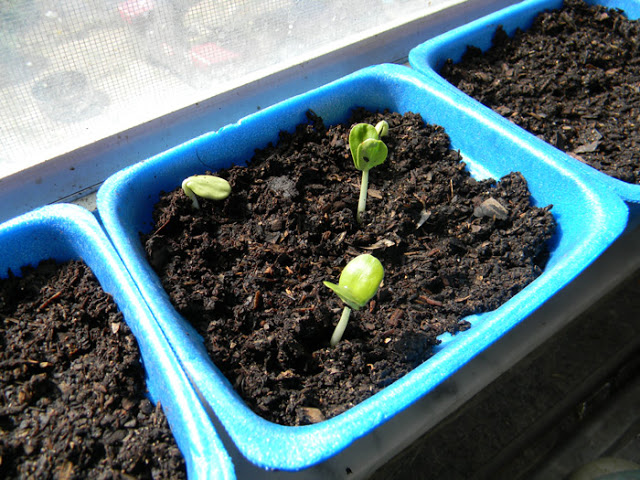

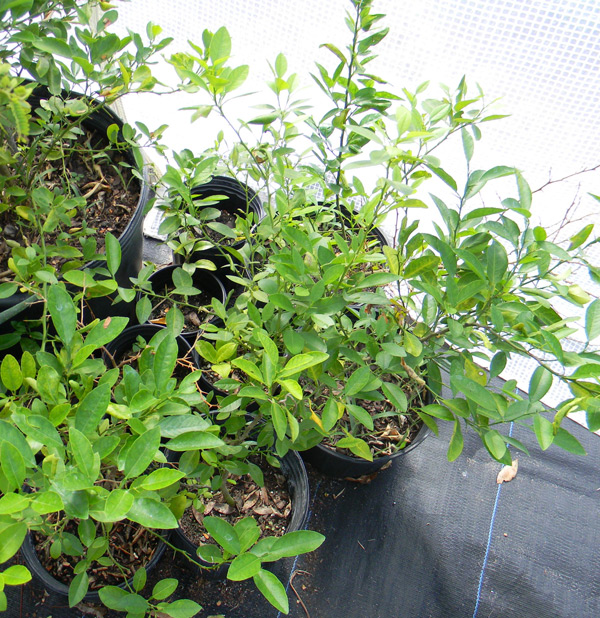
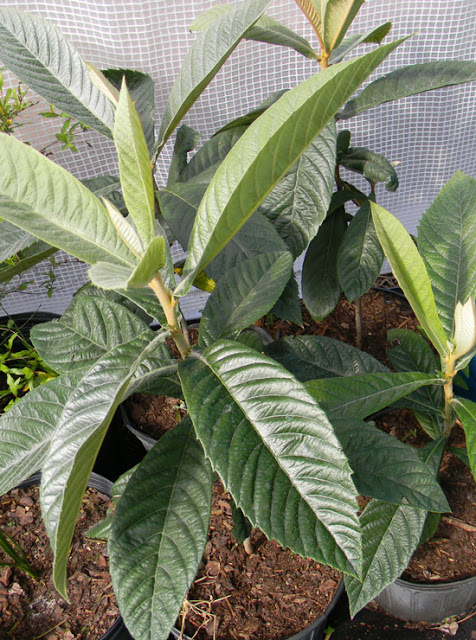
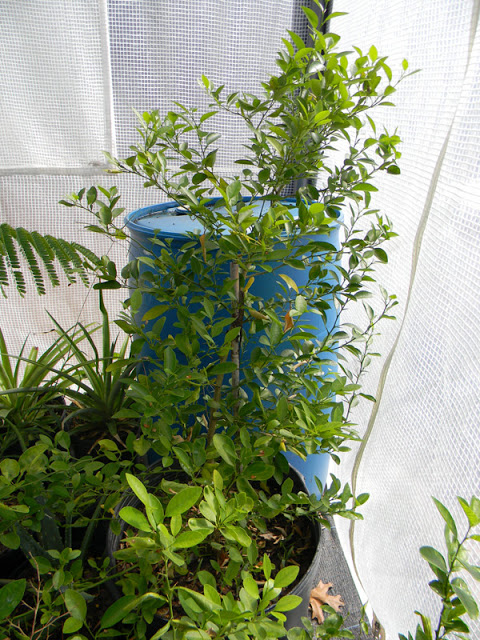
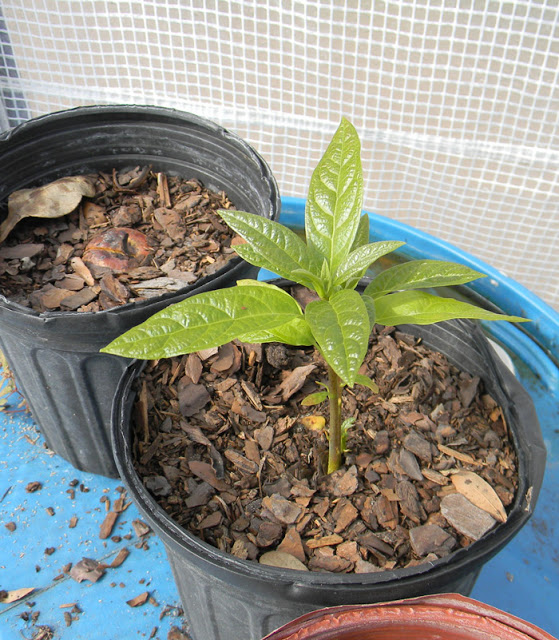
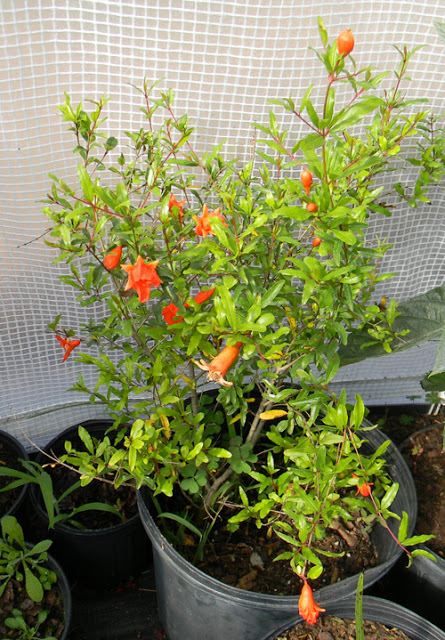
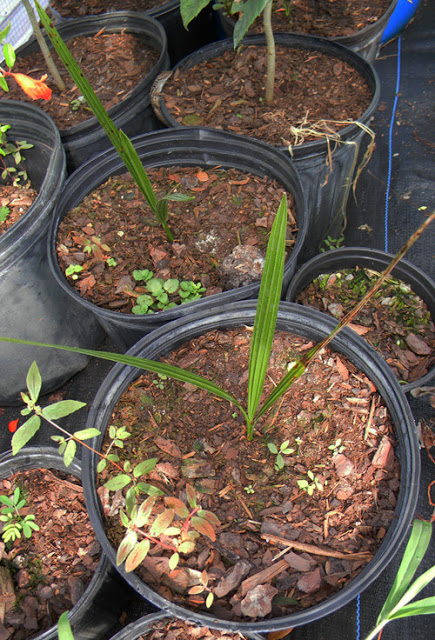
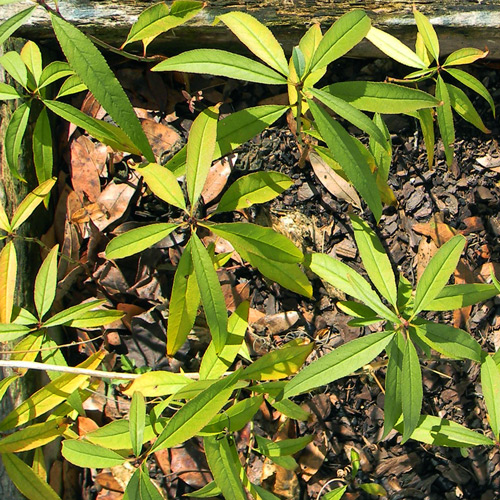
21 comments
Ditto to everything you said. People often forget that most commercially grown varieties were once just chance seedlings that someone selected for their superior traits and then propagated. If we stop growing things from seed, there's no chance of ever getting anything better than what's already available.
Thanks, Grower Jim.
"If we stop growing things from seed, there's no chance of ever getting anything better than what's already available."
That should be a bumper sticker.
Looking good there David the Good!
I like Avocados grown from seed…they are so vigorous and grow very fast into an attractive tree. I've heard fruit can be variable on them though.
Yes – they'll become a big tree quickly with a little care. I have a friend in South Florida who grew an absolutely lovely tree with great fruit in his backyard after being given a seedling from a good parent. Variable, I'm sure, but I tend to plant extras of everything just in case I get a bad egg, er, fruit.
Also – I think not going through the trauma of grafting has an impact as well.
Very nice article…!!
Forests have no artifical propagation – neither from grafting nor from stem cuttings, and seeds are the only source of uncountable fruits in the forests..!!
So as you say propagation from seeds is very natural.
Enjoyed your article a lot.
Thank you, Devang. You're totally right on forests renewing themselves. That's particularly true in the tropics – the amount of fruit is uncountable.
Question….I planted pear seeds last year, kept the pot indoors and was about to toss it thinking it wasn't going to do anything. Almost an entire year later it sprouted, and began to grow. Now it's growing like wildfire but it doesn't look like any pear tree I've seen. It looks like a weed really but it's never been outside??
Hi Barb. It might be a pear… and it might be something else entirely. Can you e-mail a photo? I'll do my best to ID it.
Love this article. I have a little pomegranate sprout right now. I don't know if it will turn in to anything where I live (Pacific Norhtwest) but like you point out, there is no harm in trying!
Thank you – and good for you for starting one! They grow fast and well.
I'll bet you could pull it off. Your big problems: cold and damp. If you plant it against the south wall of your house in gravelly soil that drains away from the foundation, 10-1 it grows for you. Look up my Key Lime articles on here… it grows despite being in the wrong range.
Just found you blog- I live in Clermont fl – quite close- usually a bit warmer than your area. I planted mango seeds recently and they sprouted right up- any experience with those?
Yes! You might be able to pull off mangoes there. They grow readily from seeds by fruit quality may vary. I’ve had them fruit in about 3-4 years from a seedling. If you do grow a tree and the fruit isn’t all that good, don’t worry – grafting mangoes is easy. Good work! Keep them protected from frost for the first few years until they good a good leaf canopy.
Hi David,
I lived in Colorado, now in Indiana. I started peach trees in Denver by throwing out dozens of seeds into my “nursery” bed after canning the Red Havens. Trees came up everywhere, let them all grow, and in 2 years I had standard-sized trees 20 ft. high. Pruned them correctly and had peaches out of this world–in 3 years! Canned them also and they looked and tasted like Elberta’s, no longer grown by commercial peach farms. I do not crack open the seed; it grows in its shell just perfectly. I have weak hands to crack the nut’s outer hard shell. No problem; it’s up in no time. I now how one in a terra cotta pot to put exactly where I want it. Will see if the garage’s cold temp of winter will stratify it without freezing it.
Now, in Indiana–did the same thing in the wrong place!–4 feet from my living room window! Planned to move it when 10 inches tall, but became sick and could not. It grew and is 3 years’ old. This past year it grew from 2 ft. to 8 ft.–wow! Under the dirt it will have lateral roots and the long tap root. I’m not that strong with digging these days, so…
I still want to move it–do you think I can? I do not want to kill it. I could prune it hard at the lower branches so I can see out the window and prune the top to open the center. Yes, it cost me nothing, but it is alive, growing, and will have peaches next year! I hate to start over and have to wait another 3 years. Its form is fantastic and no bud union for water sprouts!
Girls can do anything–almost!
Thanks, David.
Hi Chavela,
I’ll bet you could move it – you just need to do it when the tree is totally asleep for the winter. When they’re dormant and the sap hasn’t risen yet, you can dig them up, shake the dirt off the roots, do a bit of pruning on any broken roots, then replant them in a new location. Just keep them from drying out and there’s a pretty good chance trees will live through it. I’ve done it with a 6’+ peach tree that was in the wrong place.
I did something wild, I grew some seedlings from the first fruit of my peach tree!!;) I bought a couple Hale Haven Peach trees from my local garden center, one already had a baby peach on it, she’s my strong alpha female I named Penelope peachy keen Pitstop So after babying these two lovebirds for weeks, the peach grew bigger, and more juicier by the dayOne day, as I was holding, sniffing,and talking to my trees ( yes, I speak encouraging words to them!;) ), the plump soft peach just fell into my hand! I truly believe Penelope wanted me to have her first fruit, and this just have her into my palm;) I couldn’t resist the sweet scent, and even though my husband “called it”, I was like Eve in the garden and invited my teen daughter (& fellow gardener/ waterer/tree hugger) to partake of said fruit!IT was gloriously sweet & juicy, just like I imagined it would be! After wiping the juice from my grinning chin, I felt in my gut that I must plant the put right away! So , I grabbed my homemade compost of- baking soda, eggshells, coffee grinds, and tea leaves, mixed generously with potting soil and black soil from underneath my fir trees, and made a little home for the seed pit in a reused 2.5 qt. container. I did not know to crack open the pit casing. I planted it just like that, said a prayer, told it to be fruitful & multiply, and went about my business. I watered it right along with my peppers & tomatoes, nothing till about a week later several little shoots started breaking through the dirt! Not flimsy grass shoots, but hardy little seedlings!! There are now 9, and a tenth smaller one. I want to know, how do I / when do I separate the seedlings? Thank you, hoorah, & BLESSED plantings from another survival gardener!
I’m not sure that’s a peach coming up! If you planted one pit, it should only bear one seedling. An exception is mangoes – they have polyembryonic seeds, sometimes. Can you send me pictures when they get their leaves? It’s an adventure, whatever it happening!
Many of the trees that are grafted are grafted onto a restrictive rootstock so the tree will take up less space. That’s why many of the grafted trees are smaller and less vibrant than the standard size tree or ungrafted tree. Commercial Growers like the dwarf or semi dwarf type trees because they can get more trees per acre and get more fruit production per acre. Many of the home Growers like grafted trees because they can fit in their backyard and smaller areas. The larger trees will tolerate harsher climates and seem to last longer than the grafted trees do.
All true – thank you, Ken.
Thank you for taking the time to post your experience with planting peaches from seed. I live in Idaho and have one great Reliance Peach tree. I have tried to grow from seed but no luck. Now I am going to try it your way and excited about it too! I have seeds from my tree in the freezer for over a year so do you think they would still grow? My big Peach is now about 18 years old and very hardy as she even survived a bad fire so I really want peach trees from her.
Comments are closed.